Have you ever wondered how some websites consistently rank at the top for the most sought-after keywords? Ranking for high-volume keywords can feel like a daunting mission, but it's a crucial part of any successful SEO strategy.
We all know that the easy target is the low-competition keywords, but there are times when you need to be ambitious and aim for the hyper-competitive ones. The higher the search volume, the more potential traffic, leads, and conversions for your business.
However, with high competition, it can often seem like an impossible task.
In this article, we will break down proven strategies to help you conquer this challenge. From comprehensive keyword research and competitive analysis to effective on-page optimization, engaging content creation, and strategic link-building, you’ll gain insights into how to target and maintain top positions for high search volume keywords.
Stay tuned as we share practical advice to guide you on your path to SEO success.
For Starters, How to Find Keywords with High Search Volume?
Finding keywords with high search volume is the first step in crafting an effective SEO strategy. And what could be a better way to build your SEO strategy than to consider your customers and their needs?
Knowing which keywords your target audience is searching for allows you to optimize your content and increase your chances of ranking high in search engine results.
Leverage tools like Google Keyword Planner, Ahrefs, SEMrush, and Moz to discover keywords with high search volumes. These tools provide valuable data on search volume, competition, and keyword difficulty.
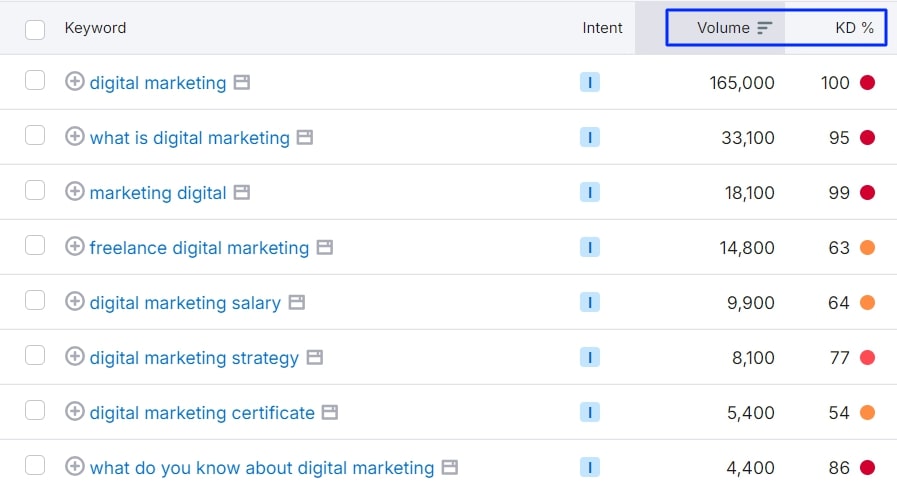
As this is no middle school competition anymore, it is completely desirable to sneak a glance at the answers of those placed around you.
Identify the keywords that your competitors are ranking for. Tools like Ahrefs and SEMrush can help you uncover these keywords and provide insights into the strategies your competitors are using.
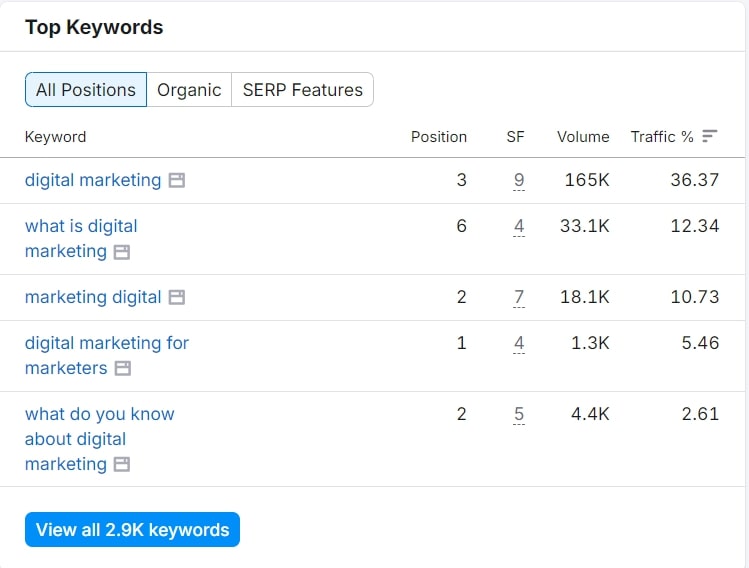
Furthermore, Google Trends can help you identify trending keywords and topics. By analyzing search trends over time, you can find keywords that are gaining popularity and capitalize on emerging opportunities. But most importantly, understand the intent behind the search queries.
Keywords with high search volume but low relevance to your content or business may not be worth targeting. Don’t forget about your customers – focus on keywords that align with your audience’s needs and interests.
Cracking the Code: How to Rank for High Volume Keywords
When put briefly and simply, the ranking could sound fairly easy – just create quality content, update it regularly and promote it. In reality, this is a time-consuming process demanding hard work, commitment, consistency, and more often than not, depending on your niche and industry, a considerable amount of money.
But as hard does not equal impossible to us, and neither should to you, let’s consider actionable steps to help you cut off your competition.
1. Competitive Analysis
To effectively rank for high-volume keywords, it’s essential to conduct a thorough competitive analysis. Start by identifying your main competitors using SEO tools like Ahrefs, SEMrush, or Moz.
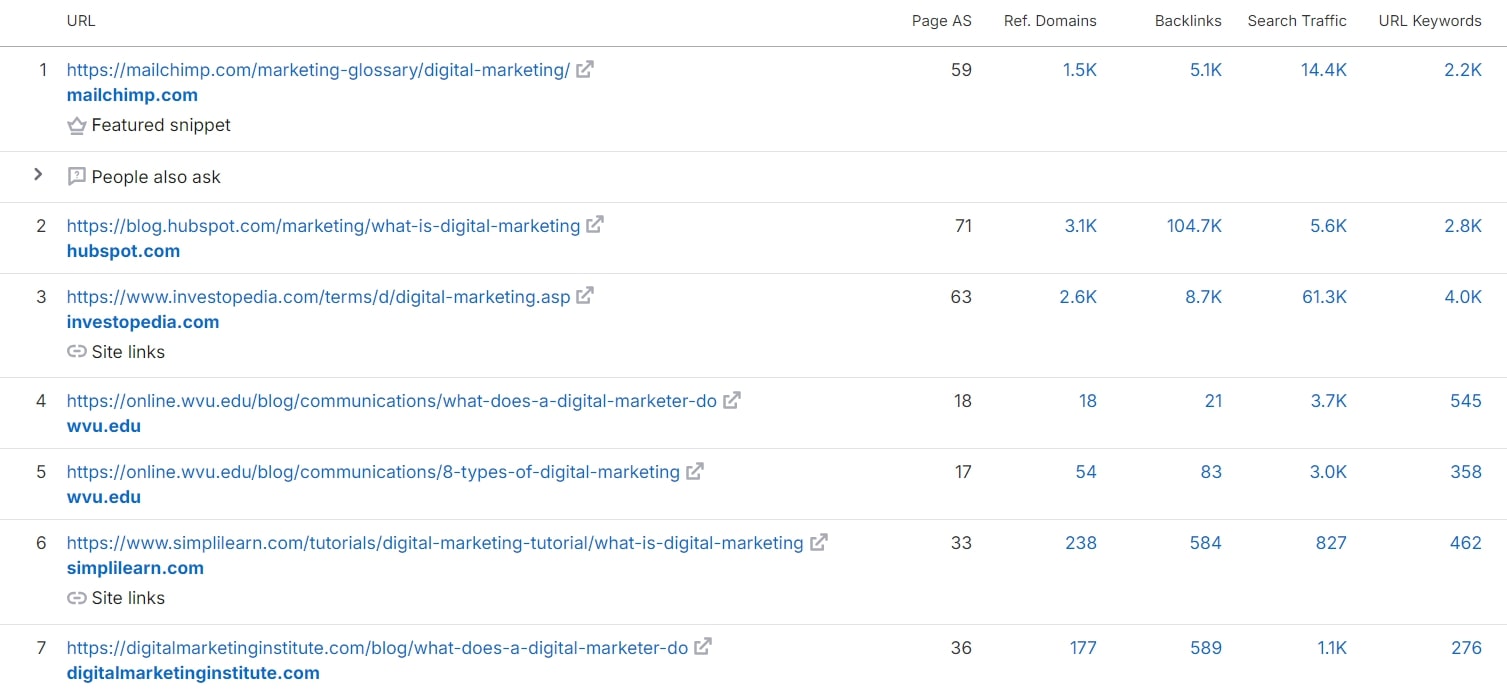
These tools help you pinpoint websites that consistently rank for your target keywords, highlighting key players in your niche. Once identified, delve into their content quality, structure, and engagement tactics.
Examine the depth and detail of their articles, noting how they comprehensively cover topics. Understanding the user intent their content addresses – whether informational, navigational, transactional, or commercial – will also give you insights into their approach.
Next, analyze your competitors’ backlink profiles using tools like SemRush or Ahrefs. Investigate the quantity and quality of their backlinks, focusing on high-authority domains that link to them. Examine the anchor texts used to understand their optimization strategies.

Identify key referring domains that frequently link to your competitors, as these can be potential link-building opportunities for you. Pay attention to the domain authority of these referring sites, prioritizing those with higher credibility.
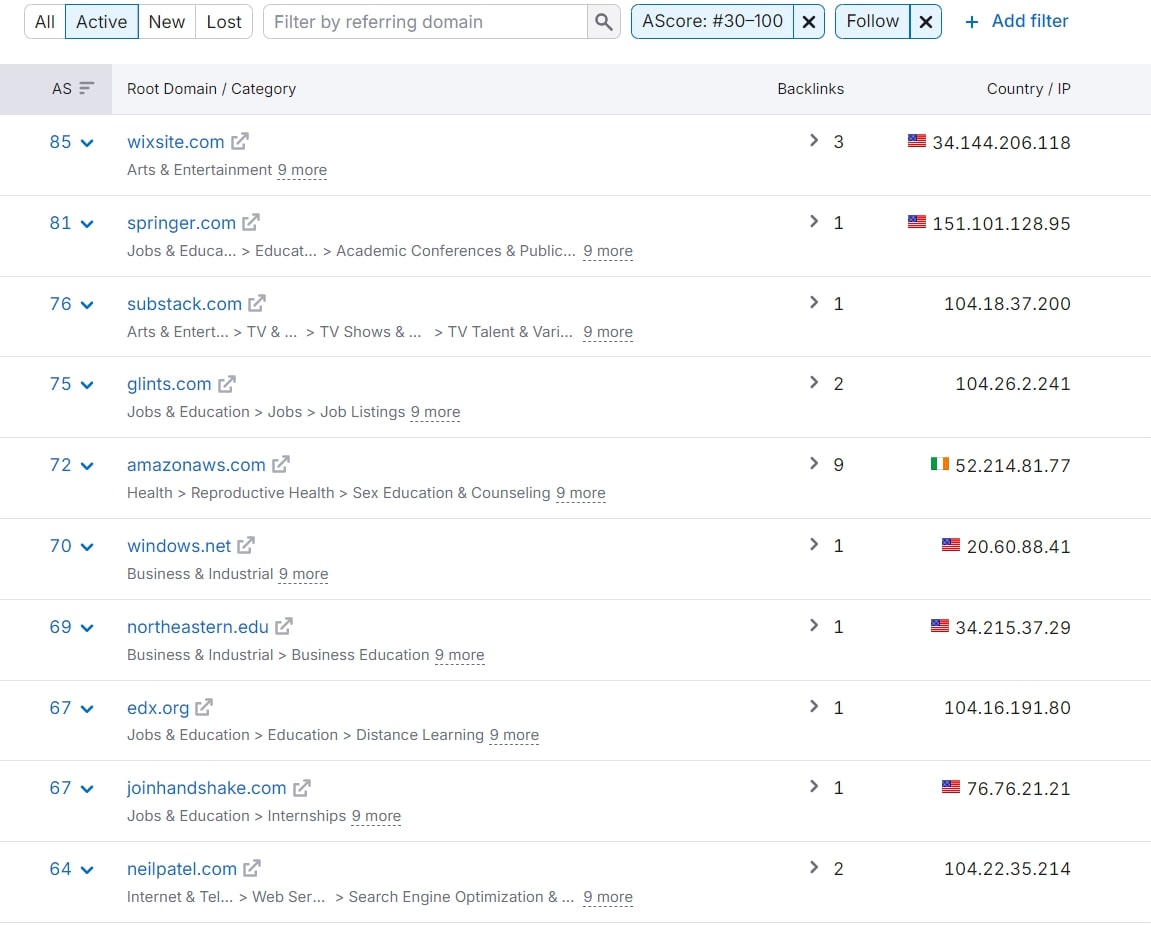
Additionally, look for content gaps in competitor backlinks, such as broken links or outdated resources, and seize the opportunity to offer your content as a valuable replacement. This not only helps in earning backlinks but also strengthens your content’s relevance and authority.
2. On-Page Optimization
Never underestimate the power of on-page SEO when it comes to ranking. Start with title tags and meta descriptions; these should be compelling and keyword-rich to attract clicks from search engine results pages.
Ensure that your keywords are naturally integrated into these elements and avoid keyword stuffing since this is no 2000s theme party. Use header tags (H1, H2, H3) to structure your content logically, making it easy for both readers and search engines to navigate.
Place your primary keywords in the H1 tag and use H2 and H3 tags for subheadings, incorporating related keywords where relevant. This hierarchical structure enhances readability for your audience while at the same time helping search engines understand the context and importance of each section.
In addition to well-structured headers, pay attention to keyword placement throughout your content. Integrate your primary and secondary keywords naturally in the introduction, subheadings, and body of your text. Once again, avoid keyword stuffing at all costs, as it can now only negatively impact your search engine rankings.
Create clean and descriptive URLs that include your target keywords, making it easier to understand the content of your page. Internal linking is another vital aspect of on-page optimization. Link to other relevant pages on your site to improve navigation, distribute link equity, and keep visitors engaged longer.
Enhancing user experience (UX) is an evergreen component of on-page optimization. Focus on creating high-quality content that is valuable, informative, and engaging. Incorporate multimedia elements like images, videos, and infographics to make your content more appealing and shareable.
Ensure your website is mobile-friendly and loads quickly, as these factors significantly impact both user satisfaction and search engine rankings. Regularly update your content to keep it fresh and relevant, signaling to search engines that your site provides current and valuable information.
3. Content Creation
Creating high-quality content that resonates with your audience is, of course, an inescapable step in ranking. Our proven tactic is to always start by looking at your content from your customers’ perspective. Understand what they want to read about and what is truly useful to them.
This customer-centric approach ensures that your content addresses their needs, questions, and pain points, making it valuable and engaging. Conduct audience research to gather insights into their preferences, interests, and search behavior. Use these insights to craft content that not only attracts but also retains and converts your audience.
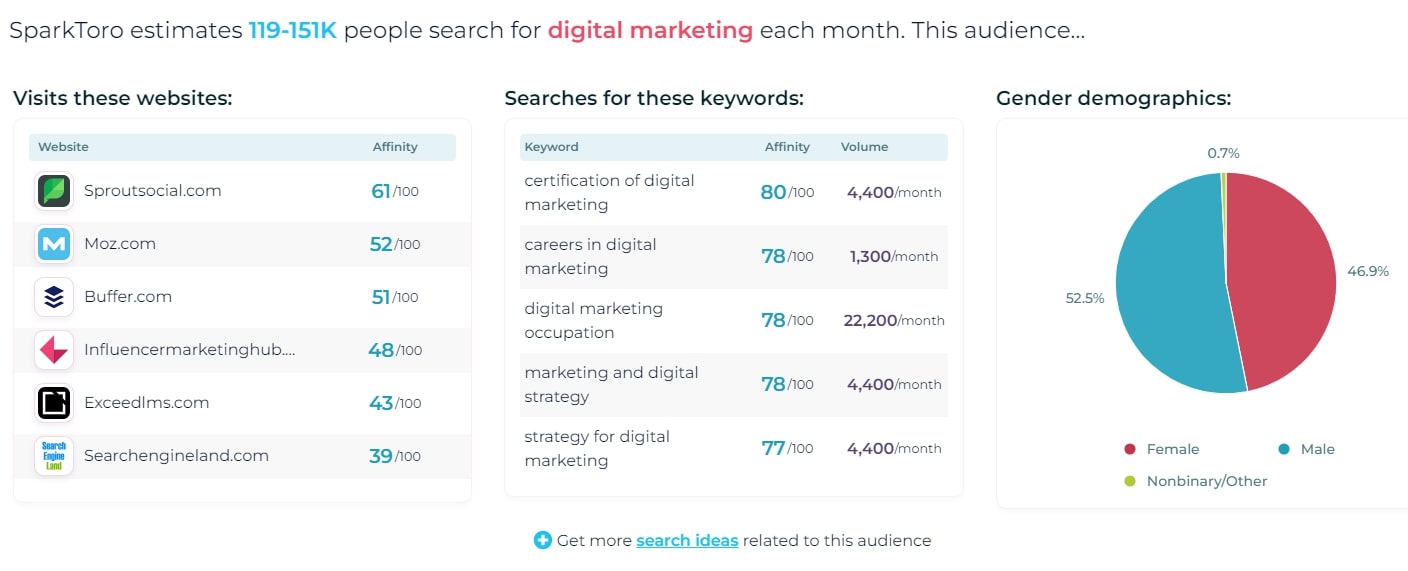
To maintain high-quality content, it is crucial to stay up-to-date and demonstrate expertise in your field. Regularly update your content to reflect the latest industry trends, data, and best practices.
This not only keeps your content relevant but also signals to search engines that your site is a credible source of current information. Incorporate authoritative sources and references to back up your claims and provide added value to your readers. High-quality content should be comprehensive and well-researched, covering topics in-depth to answer all potential questions your audience might have.
Moreover, it’s now becoming more and more important to focus on creating engaging and diverse content formats. Use multimedia elements like images, videos, infographics, and interactive content to enhance user experience and increase shareability.
This variety keeps your audience interested and encourages longer time spent on your site. By combining a customer-centric approach with expert, up-to-date information, you can create high-quality content that stands out in search engine results, drives organic traffic, and effectively ranks for high-volume keywords.
4. Link-Building Strategies
Effective link-building is a story in itself, but it is essential for boosting your website’s authority and improving its ranking for high-volume keywords. One of the most popular and effective tactics is guest blogging. Value for value – by writing valuable content for reputable websites in your niche, you can earn backlinks to your site.
This not only helps in building authority but also exposes your content to a wider audience. When reaching out for guest blogging opportunities, ensure that the sites you target have high domain authority, organic traffic and relevance to your industry.
Depending on your industry, influencer outreach can nowadays be a truly powerful strategy. You can connect with influencers and industry leaders to earn backlinks and mentions. This will most probably cost you, but influencers who have established credibility and a large following can significantly boost your site’s visibility and authority.
Content promotion is critical in attracting natural backlinks. Actively promote your content through social media, email marketing, and online communities to increase its reach and likelihood of being shared. Create shareable content that other websites and users find valuable and want to link to. Of course, if your wallet is not tight, there are always paid ads enabling you to appear above organic search results.
Broken link building is another tactical approach where you identify broken links on other websites and suggest your content as a replacement.
Use tools like Ahrefs or Moz to find broken links on relevant sites, then reach out to the site owners with a polite suggestion to replace the broken link with a link to your high-quality, relevant content. Again – value for value.
5. Monitoring and Adjusting
Monitoring and adjusting your SEO strategy is crucial for sustained success. No point in outrunning the competition if you allow them to outrun you again. Regularly track your keyword rankings and organic traffic using tools like Google Analytics and Google Search Console.
This data provides insights into which strategies are working and which need refinement. Analyze user engagement metrics, such as bounce rates and time on page, to understand how visitors interact with your content.
Be proactive in identifying trends and changes in search engine algorithms that may impact your rankings. Stay updated with SEO trends and best practices to ensure your strategies remain effective. Regularly review your competitors to identify new opportunities and adjust your approach accordingly.
Only by continuously monitoring your performance and making data-driven adjustments can you stay ahead of the competition and maintain high rankings for your target keywords.
If all of this feels overwhelming, consider enlisting the help of professional SEO services. Whether you choose to tackle the work yourself or hire experts to handle it, investing in effective SEO strategies will yield significant returns for your business.
Hard Work Always Pays Off: Statistics Prove It
According to a study by Backlinko, the top-ranking page on Google receives approximately 27.6% of all clicks for a given search term, while the tenth position garners only 2.4% CTR. This highlights the importance of securing high rankings to drive organic traffic.
Moreover, Forbes reports that organic clicks represent 45.1% of all search result clicks on desktop devices, indicating that users tend to trust organic search results more than those from paid ads. This means that by leveraging effective SEO strategies, you can attract more traffic, achieve higher visibility, and ultimately boost your business’s success.
Remember, mastering SEO is like gardening: it takes time, effort, and a little dirt under your nails, but the harvest of high-volume keywords will leave your competitors green with envy!





